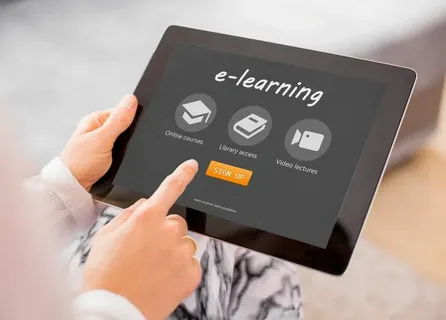Top Advantages and Disadvantages of E-Learning in 2025
November 17, 2024


E-learning has transformed the education system over the past few years especially in Pakistan by means of Kamran Online Teaching. By this, more than 4,000 teachers are enabled to cater to a global viewership for their services as educational resources. Being an inherent quality of any learning technique, the course of e-learning too has benefits and drawbacks.
Virtual learning provides one of the most significant advantages: accessibility. Learners can access educational materials at any time, and thus busy professionals and students can easily find a time to include learning in their schedules12. This flexibility enables Kamran Online Teaching-trained teachers to provide services not only within their own time zones but also cut across geographical bounds.

Virtual learning tends to be cheaper compared to the traditional classroom. It saves costs on traveling, accommodations, and physical materials1. To most teachers shifting to virtual-based classrooms, this means that they can spend more on professional development and other personal growth rather than logistical costs.
An Virtual learning platform contains all-inclusive multimedia resources, including videos, interactive quizzes, and discussion forums. Diversed learning materials will cater to varied student learning styles, keep learners interested, and allow them to play the same content multiple times to retain and understand complex topics. Such options enhance retention and understanding.
E-learning encourages self-paced learning, making the students or workers learn at their own pace and time14. This is especially helpful for teachers, in case they require some more time to learn new technologies or pedagogies that they learn during the course.
One of the major limiting factors of Virtual learning includes the lack of direct interaction with instructors and peers. This is because many learners find that they learn better when they can engage directly with others23. The lack of social presence may have the effect of isolating the learner and defeating the aspect of collaborative learning that is often preferred in most educational setups.
Accessibility to technological and internet access is also required for Virtual learning Connectivity in some areas or even devices may be very poor, thereby creating quite big challenges. To transition from traditional methods, many teachers may require extra training and support for the demand imposed by technology. Join us on linkdin now
Although the student can control his learning and assume a fixed pace, distance learning requires the learner to be highly disciplined and motivated. The lack of a proper and formal setting for a regular classroom may not allow students to maintain concentration and accomplish their work.
Some topics require hands-on experience that e-learning cannot successfully accomplish. Although theoretical knowledge can be delivered online, practical skills often require face-to-face or on-site instruction or experience23. For a teacher teaching in a science class or vocational training, such a limitation is likely to be daunting. Visit our facebook page now

As Kamran Online Teaching trains more and more teachers in Pakistan, understanding the benefits and drawbacks of Virtual learning is essential for both trainers and trainees. Although there is no equal to e-learning in terms of flexibility, access, and cost-effectiveness, it does have its drawbacks like lower interpersonal interaction and overdependence on technological means. These above disadvantages can be overcome through newer approaches and continued support towards the trainers so that the experience of Virtual learning can be maintained for everyone.
In summary, Virtual learning is one of the significant revolutions in education that aligns extremely well with modern technological advancement. Embracing its benefits while being mindful of its limitations should make it easier for educators to move from offline teaching to online platforms, enriching the global educational landscape.
